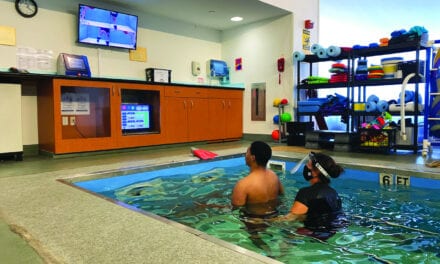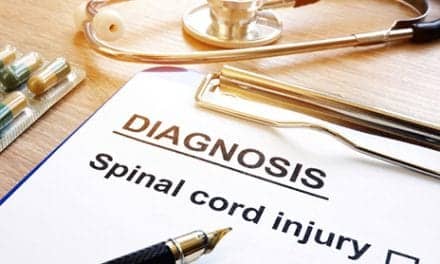
The breakthrough was made possible by a team of scientists at the University of Louisville, UCLA and the California Institute of Technology, as well as 30 years of research to find clinical therapies for paralysis.
Today, Summers is able to reach a standing position, supplying the muscular push himself. He can remain standing, and bearing weight, for up to 4 minutes at a time (up to an hour with periodic assistance when he weakens). Aided by a harness support and some therapist assistance, he can make repeated stepping motions on a treadmill. He can also voluntarily move his toes, ankles, knees and hips on command.
Results were achieved through direct epidural electrical stimulation of the subject’s lower spinal cord, mimicking signals the brain normally transmits to initiate movement. Once that signal is given, the research shows, the spinal cord’s own neural network combined with the sensory input derived from the legs to the spinal cord is able to direct the muscle and joint movements required to stand and step with assistance on a treadmill.
The other crucial component of the research was an extensive regime of Locomotor Training while the spinal cord was being stimulated and the subject suspended over the treadmill. Assisted by rehabilitation specialists, the individual’s spinal cord neural networks were retrained to produce the muscle movements necessary to stand and to take assisted steps.
Joel W. Burdick, PhD, professor of mechanical engineering and bioengineering at Caltech, developed new electromechanical technologies and computer algorithms to aid in locomotion recovery in spinal cord injury patients.
The study is published in the British medical journal The Lancet.
[Source: Medical News Today]




